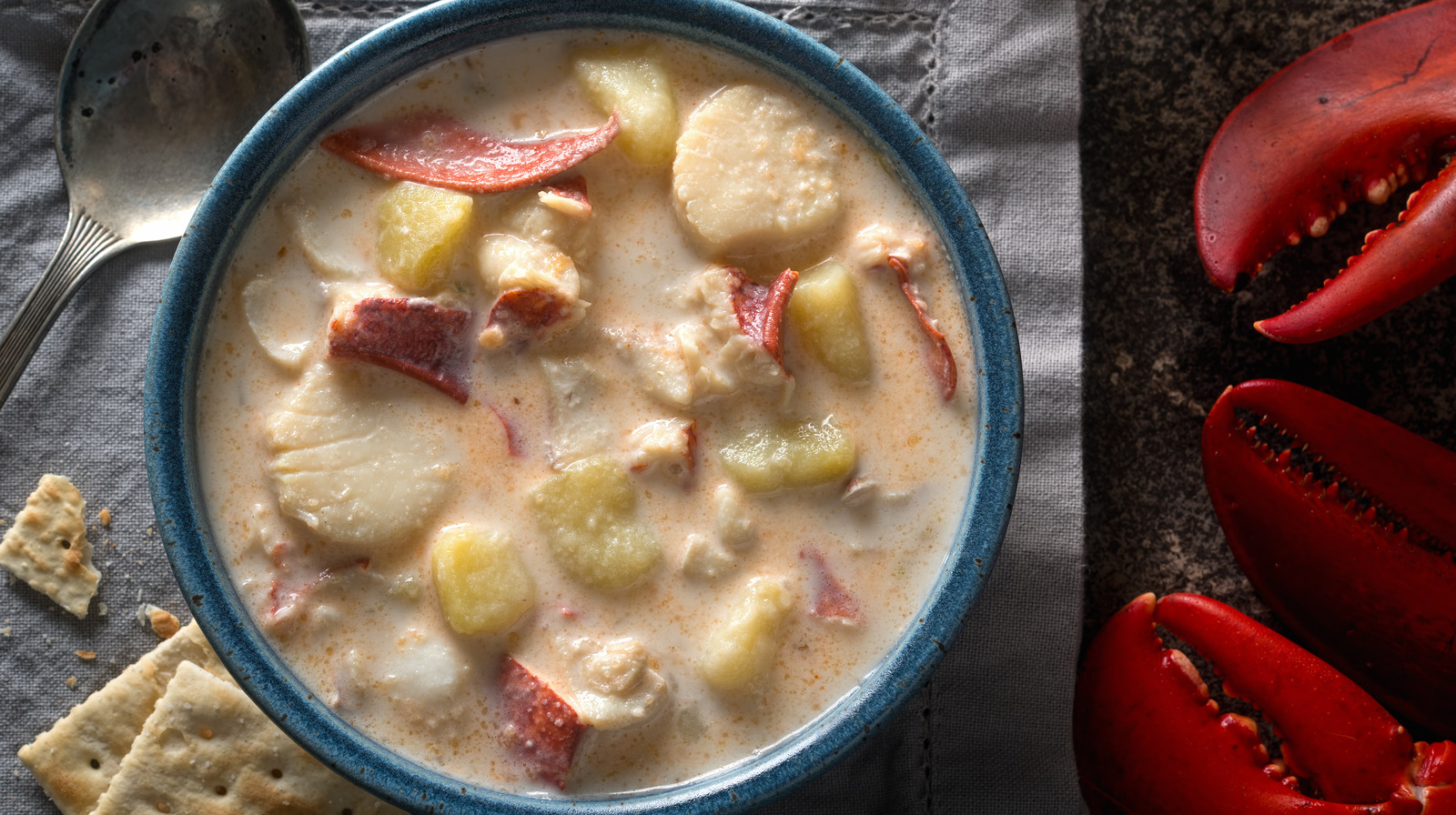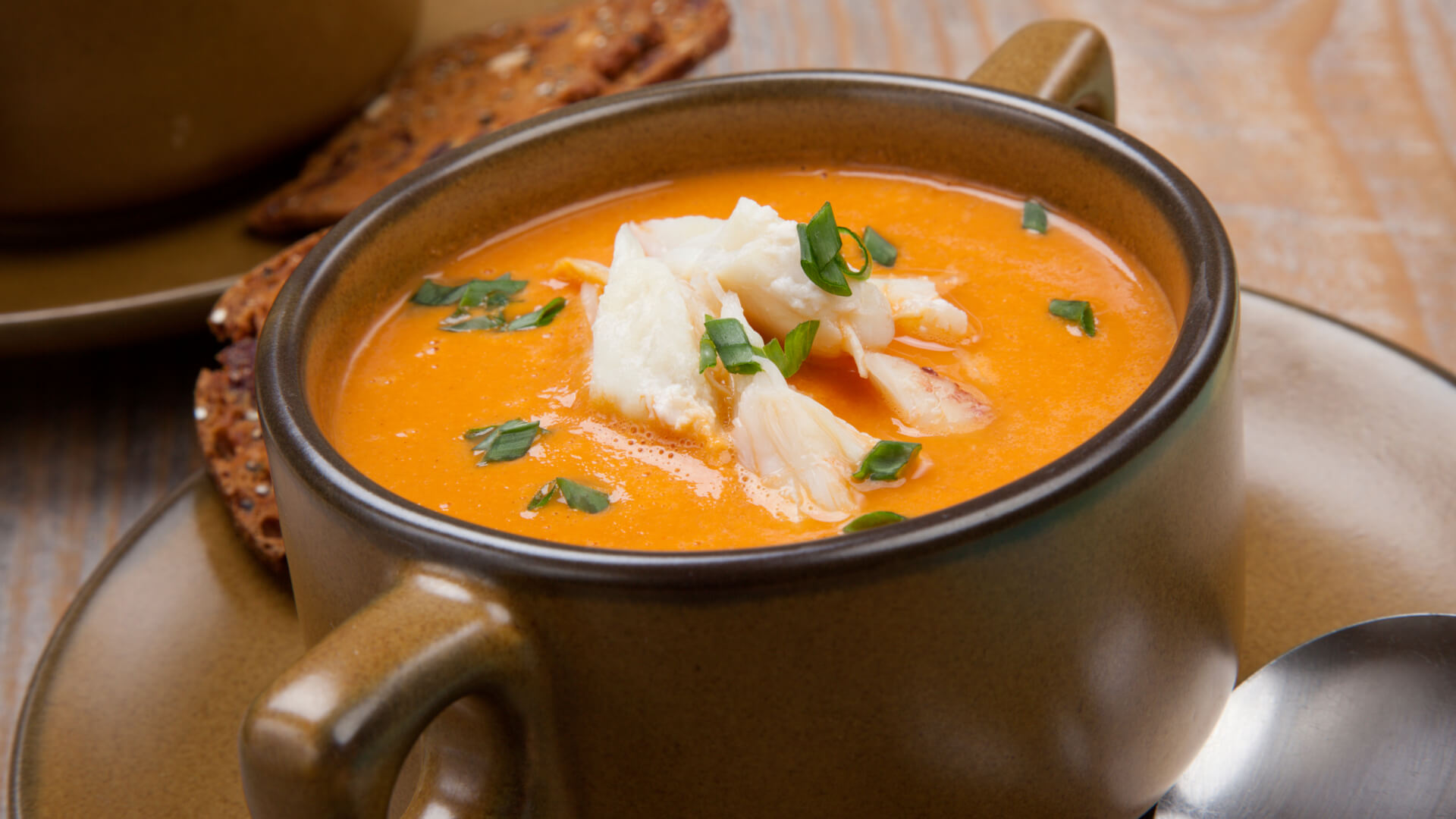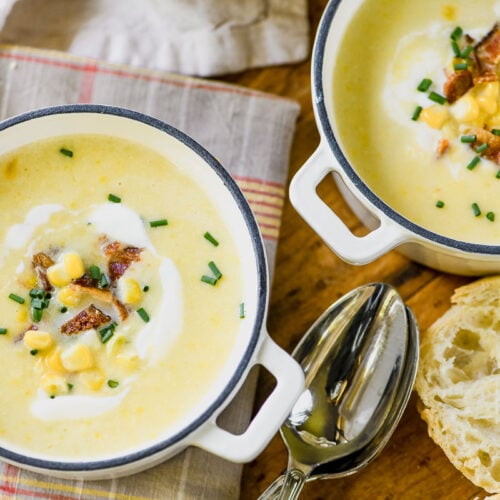
The Basics Of Creamy Soups
Definition And Background Of Chowder, Soup, And Bisque
Creamy soups such as chowder, soup, and bisque are popular dishes known for their rich and comforting textures. Chowder is a type of soup that originated in French fishing villages, traditionally made with seafood, potatoes, onions, and sometimes bacon. On the other hand, bisque is a smooth and silky soup also originating from France, made with seafood, heavy cream, and white wine. These soups have distinct textures and origins, offering unique dining experiences to soup enthusiasts.
Common Ingredients In Chowder, Soup, And Bisque
When comparing chowder, soup, and bisque, it’s essential to note the key differences in ingredients that contribute to their distinctive flavors and textures. Here is a table showcasing the common ingredients found in each type of soup:
| Ingredient | Chowder | Soup | Bisque |
|---|---|---|---|
| Seafood | Commonly featured, often chunky pieces | Can include a variety of proteins | Main focus of the soup, finely blended |
| Potatoes | Typically added for heartiness | Not always present | Not included in traditional recipes |
| Cream | Common in creamy chowders | Can be used in certain recipes | A staple ingredient for silkiness |
| Wine | Rarely used in traditional chowder recipes | Some recipes may include wine | Commonly used for flavor enhancement |
| Vegetables | Often found in chunky chowders | Frequently included for added nutrition | Limited presence, focus on seafood flavors |
By understanding these key ingredients, you can appreciate the nuances in flavor and texture that differentiate chowder, soup, and bisque from one another.
Chowder: Hearty And Chunky
Characteristics Of Chowder
Chowder, known for its rich and hearty nature, is a type of soup that boasts a thick and chunky consistency. This creamy dish is often made with seafood, potatoes, cream, and sometimes bacon, providing a satisfying texture and depth of flavor. Chowder stands out for its comforting appeal and ability to warm the soul with each spoonful.
Popular Types Of Chowder Varieties
There are several popular varieties of chowder enjoyed by soup enthusiasts around the world. Some of the most well-known types include New England clam chowder, corn chowder, and seafood chowder. Each variation offers a unique blend of ingredients and flavors, catering to different preferences and regional culinary traditions. Whether you prefer the briny taste of seafood or the sweetness of corn, there is a chowder variety to suit every palate.
Soup: Simplicity In A Bowl
Characteristics Of Soup
Soup, known for its simplicity and versatility, is a comforting dish that comes in various forms and flavors. Unlike its chunky counterpart, chowder, soup typically has a thinner consistency and can be enjoyed as a light appetizer or a hearty meal. It is often prepared by simmering vegetables, meats, or legumes in a flavorful broth, creating a nourishing and satisfying culinary experience.
Types Of Soups Around The World
There is a wide range of soup varieties enjoyed across different regions and cultures. From the spicy Tom Yum soup in Thailand to the creamy Vichyssoise in France, each country offers its own unique take on this timeless comfort food. Whether it’s the tangy flavors of Gazpacho from Spain or the hearty goodness of Minestrone from Italy, soup serves as a culinary canvas for creativity and tradition, bringing people together through shared appreciation of a warm and nourishing meal.
Soup: Simplicity In A Bowl
Characteristics Of Soup
Soup, recognized for its simplicity and adaptability, provides a comforting meal experience with a wide array of forms and flavors. In contrast to its chunkier relative, chowder, soup typically boasts a thinner consistency suitable for serving as a light starter or a substantial dish. This culinary delight is often crafted by gently simmering vegetables, meats, or legumes in a flavorsome broth, offering a nourishing and pleasurable dining experience.
Types Of Soups Around The World
A diverse range of soup varieties delights taste buds worldwide. From the spicy Tom Yum soup originating in Thailand to the velvety Vichyssoise of France, each nation contributes its unique twist to this timeless comfort food. Whether savoring the zesty notes of Gazpacho from Spain or the heartiness of Italian Minestrone, soup acts as a culinary canvas for innovation and tradition, uniting individuals through a shared love for a warm, nurturing meal.
Bisque: Smooth And Savory
Characteristics Of Bisque
Bisque, renowned for its smooth and savory profile, stands out for its luxurious texture and rich seafood flavor. The key differentiator between bisque and chunkier soups like chowder lies in the former’s velvety consistency. While chowders feature hearty chunks of ingredients like meat, vegetables, and potatoes, bisques boast a silky-smooth finish crafted through careful blending and straining.
Traditional Bisque Variations
Bisque recipes exhibit versatility with variations like lobster bisque, shrimp bisque, or crab bisque offering diverse seafood profiles to delight discerning palates. While the base often includes shellfish broth, cream, and aromatics, each variation incorporates unique seafood elements to create a nuanced and indulgent dining experience.

Texture Matters
Smoothness Vs. Chunkiness In Soups
When it comes to creamy delights, the distinction between smooth bisque, chunky chowder, and versatile soup lies in their texture. While soups offer a thinner consistency, ideal for a light and comforting meal, chowders showcase a heartier texture with chunky ingredients. Bisques reign supreme with their silky-smooth finish, elevating the dining experience with a luxurious mouthfeel.
Importance Of Texture In Chowder, Soup, And Bisque
The texture plays a crucial role in enhancing the overall dining experience of creamy soups. Chowders, known for their chunky and substantial nature, provide a satisfying bite with each spoonful. Soups, on the other hand, cater to a broader audience with their lighter texture, making them suitable for various occasions. Bisques, the epitome of smoothness, offer a refined dining experience that is both indulgent and sophisticated.
Flavor Profiles
Contrasting Flavors In Chowder, Soup, And Bisque
Each type of soup – chowder, soup, and bisque – offers a distinct flavor profile that caters to different preferences. Chowders are characterized by their hearty and robust flavors, perfect for those who enjoy a more substantial and filling meal. Soups tend to be lighter and refreshing, often featuring a vegetable or chicken broth base for a comforting taste. Bisques, on the other hand, boast rich and indulgent profiles, with the flavors of shellfish accentuated by the addition of cream and butter.
Pairing Ingredients For Perfect Creamy Soups
Creating the perfect creamy soup involves carefully selecting and pairing ingredients to enhance the overall flavor. For chowders, ingredients like tender clams, creamy potatoes, and smoky bacon come together to create a rich and satisfying dish. When making a bisque, the addition of cream and butter elevates the flavors of the shellfish to create a luxurious dining experience. Lighter soups can benefit from a variety of vegetables and herbs to add depth and complexity to the broth.
Preparation Methods
Cooking Techniques For Chowder, Soup, And Bisque
When preparing chowder, cooks typically opt for a simpler approach, throwing all the ingredients into a soup pot or slow cooker and allowing the mixture to simmer until the chunky soup is ready to be served. In contrast, making bisque involves a higher ratio of cream to stock, resulting in a richer and creamier consistency than chowders.
Tips For Enhancing Flavors In Creamy Soups
For chowders, the key to enhancing flavors lies in combining ingredients like tender clams, creamy potatoes, and smoky bacon to create a hearty and satisfying dish. On the other hand, bisques can be elevated by incorporating rich elements such as cream and butter, which enhance the flavors of shellfish for a more indulgent experience. Lighter soups can benefit from the addition of a variety of vegetables and herbs to add depth and complexity to the broth.

Regional Influence
Chowder, Soup, And Bisque From Different Cultures
Chowder, soup, and bisque are culinary delights that have transcended borders and gained popularity in various cultures around the world. While New England clam chowder is a staple in American cuisine, the French are known for their decadent lobster bisque. Each culture puts its own unique spin on these creamy soups, incorporating local ingredients and flavors to create distinct variations.
Regional Variations In Creamy Soups
Regional variations in creamy soups offer food enthusiasts a diverse range of flavors and textures to explore. In the Pacific Northwest, you may find a hearty salmon chowder highlighting the region’s abundant seafood. In Louisiana, a spicy shrimp bisque may take center stage, showcasing the Creole influence on traditional French recipes. Each variation offers its own unique flavor profile, making them distinct from one another and appealing to a wide range of palates.
Making The Right Choice
Choosing Between Chowder, Soup, And Bisque
In different cultures, chowder, soup, and bisque have gained popularity, showcasing unique variations in each region. While Americans savor New England clam chowder, the French indulge in decadent lobster bisque. These creamy soups are crafted with local ingredients, reflecting the culinary diversity across the globe.
Regional Variations in Creamy Soups
Regional variations add depth to the creamy soup experience, offering a myriad of flavors and textures. In the Pacific Northwest, a rich salmon chowder celebrates abundant seafood, while Louisiana’s spicy shrimp bisque pays homage to Creole influences. Each variation boasts its distinctive profile, catering to diverse palates and culinary preferences.
Enjoying Creamy Delights In Every Season
Appreciating the differences in chowder,soup, and bisque allows for a versatile and enjoyable dining experience year-round. Whether embracing the heartiness of a chowder on a cold winter evening or savoring the refinement of a bisque during a summer luncheon, these creamy delights cater to a range of tastes and preferences, making them a delightful addition to any menu.
FAQ About Chowder Vs Soup Vs Bisque: Deciphering Creamy Delights
Q: What is the main difference between chowder, soup, and bisque?
A: Chowder is a type of soup that is typically creamy and chunky, often made with seafood or vegetables. Soup is a general term for a liquid food made by boiling or simmering meat, fish, or vegetables. Bisque is a smooth, creamy soup made with shellfish, particularly lobster, crab, or shrimp.
Q: Are there any specific ingredients that differentiate chowder, soup, and bisque?
A: Yes, the main difference lies in the consistency and ingredients used. Chowder is usually thickened with potatoes and may contain cream, while soup is lighter and more broth-based. Bisque is a rich, indulgent soup made with shellfish and often enhanced with cream.
Q: Can chowder, soup, and bisque be made with both meat and vegetables?
A: Absolutely! While seafood is a popular choice for chowder and bisque, you can also find versions that include meats like bacon or ham. Soups, on the other hand, have a wide range of options, from vegetable soups to hearty stews with meat.
Q: Which of these creamy delights is typically considered the heartiest?
A: Chowder is often considered the heartiest of the three due to its thick and creamy consistency, which makes it more filling. Bisque, although rich and creamy, is usually served in smaller portions as a starter or luxurious dish. Soup can vary widely in richness and can range from light broths to thick stews.
Q: Can chowder, soup, and bisque be frozen for later consumption?
A: While all three can be frozen, chowder and bisque containing dairy may separate upon thawing, affecting the texture. It’s best to consume them fresh for optimal taste and consistency. Soups with a broth base tend to freeze and reheat more successfully without compromising flavor or texture.

Gourmet Tiger, a culinary sensation, was established with a vision to delight taste buds and create unforgettable dining experiences. Specializing in cakes, casseroles, lunch, catering, and more, Gourmet Tiger has become a household name synonymous with exquisite flavors and impeccable service. Since its inception, Gourmet Tiger has been dedicated to crafting delectable treats and savory dishes that exceed expectations. Their commitment to using only the finest ingredients and innovative culinary techniques has set them apart as a leader in the food industry.